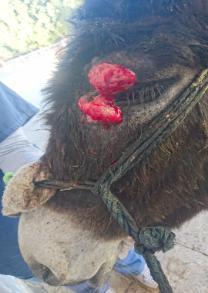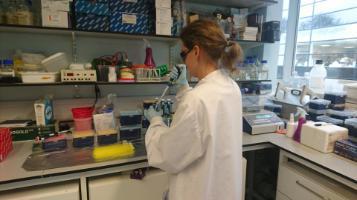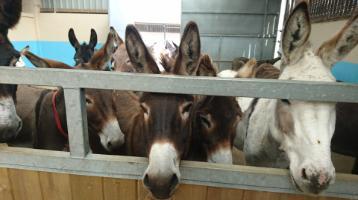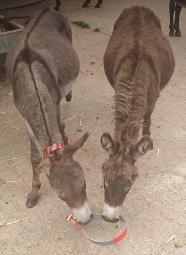Sarcoid Project
Introduction

The Donkey Sanctuary UK is funding this project, which aims to find out more about sarcoid tumours. The information gathered will be used to help prevent the disease and manage cases more effectively, both in donkeys at the Sanctuary and other equines.

Project objectives
Molecular biology
When donkeys at the sanctuary undergo surgery to remove sarcoid tumours, samples of the tumour tissue are sent to the University of Glasgow for analysis. This is only done when it is in the donkey’s best interests, and samples are never taken solely for the project.
DNA is extracted from the sarcoid tissue to look for Bovine (cattle) Papillomavirus DNA; this virus has been implicated in the aetiology of sarcoids along with other factors. The viral DNA is sequenced to determine which strain is present, and this will help our understanding of how the disease may be transmitted. Flies being trapped at the sanctuary for another project are also being examined for the presence of viral DNA, as they may be involved in transmitting the infection.

Epidemiology
Viral DNA, RNA and protein have been found in sarcoid tumour cells, and these appear to affect the cell so it starts behaving abnormally and becomes 'cancer-like'. However, new fully intact “offspring” viral particles which could infect another animal have not been found in sarcoid tissue. If the virus does not complete its life-cycle in equids, it is unclear how donkeys could infect each other, despite circumstantial evidence suggesting that they do. One hypothesis is that each new donkey infection may come from cattle or from an environmental source. Alternatively there may be donkey-donkey transmission by an unknown mechanism.
 The Donkey Sanctuary UK has 1000's of donkeys distributed over many farms, and kept in different sized groups. Their extensive database will be examined to look for risk factors for sarcoid disease, such as particular environments. Whether donkeys are more likely to develop sarcoids if their donkey friends already have them will be also investigated. The results of this work should help improve our understanding of sarcoid transmission, as well as revealling other underlying factors for sarcoid tumours to develop.
The Donkey Sanctuary UK has 1000's of donkeys distributed over many farms, and kept in different sized groups. Their extensive database will be examined to look for risk factors for sarcoid disease, such as particular environments. Whether donkeys are more likely to develop sarcoids if their donkey friends already have them will be also investigated. The results of this work should help improve our understanding of sarcoid transmission, as well as revealling other underlying factors for sarcoid tumours to develop.
Behaviour
 Donkeys can form strong pair bonds and vary their social structure depending on their environment. In order to investigate possible donkey to donkey tumour spread, the social behaviour of donkeys at the sanctuary is being observed. Understanding the social networks of donkeys will hopefully aid our understanding of how infections are being transmitted.
Donkeys can form strong pair bonds and vary their social structure depending on their environment. In order to investigate possible donkey to donkey tumour spread, the social behaviour of donkeys at the sanctuary is being observed. Understanding the social networks of donkeys will hopefully aid our understanding of how infections are being transmitted.

